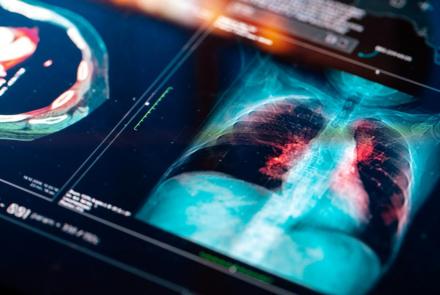When Dr. Marc London, MD, tells a patient they have Parkinson’s disease, he knows they are likely to picture the worst-case scenario. “Many people assume they will become very disabled. In fact, the disease progresses differently for each person, and in many cases it evolves slowly,” says Dr. London, Chief of the Section of Neurology at Montefiore Nyack Hospital. “The good news is that we have effective treatment that can help many patients.”
Parkinson’s disease is a chronic and progressive movement disorder. The cause of the disease is unknown. Parkinson’s involves the malfunction and death of nerve cells in the brain called neurons. Some of these dying neurons produce dopamine, a chemical that sends messages to the part of the brain controlling coordination and movement. As the disease progresses, the amount of dopamine the brain produces decreases. This makes it more difficult to control movement.
Parkinson’s is more common in people over the age of 60, and is more often seen in men. The most common sign of Parkinson’s is a tremor in the hands when the limb is at rest. Other symptoms include slowness of movement, rigidity or stiffness of the limbs and trunk, and impaired balance and coordination. “A person becomes more stooped, and their handwriting becomes smaller,” Dr. London says.
There is no blood test or imaging scan that can diagnose Parkinson’s. A doctor bases the diagnosis on a person’s symptom and a neurological exam. “The changes that take place in the brain are microscopic, so we don’t have any way of directly picking it up on a scan,” he explains. A doctor may order an MRI to exclude other conditions, such as a stroke, that could be causing the symptoms.
While there is no cure for Parkinson’s, there are a variety of medications that can provide relief from symptoms. The most commonly prescribed medication is called Sinemet, which combines two medications—levodopa and carbidopa. Nerve cells use levodopa to make dopamine, and replenish the brain’s decreasing supply. Because it can cause nausea and vomiting, it is combined with carbidopa, which prevents these side effects.
People with the disease should engage in light exercise as much as they are able, to keep them mobile and more flexible, Dr. London advises. “Tai chi seems to be a particularly good form of exercise for Parkinson’s because of the type of motion,” he says. “It promotes flexibility and balance.
Physical therapy can also be helpful for a person with Parkinson’s. “As the disease progresses, a person may have difficulty with walking and balance, and falls can become a problem,” he says. “Physical therapy can help address these problems.”
There is no diet or supplements that have been proven to help people with Parkinson’s, Dr. London notes.
He encourages patients to learn more about the disease, so they can better take charge of their life with Parkinson’s. Good sources of information include The Parkinson’s Disease Foundation, the Michael J. Fox Foundation, and the National Institute of Neurological Disorders and Stroke.






